Ted McCarty and Gibson’s Golden Age

Ted McCarty is the great man in the history of Gibson, under his direction the company lived its Golden Age where he launched all emblematic Gibson models.
Ted McCarty, Gibson’s “Leo Fender”
Although the famous name is Gibson, after the luthier Orville Gibson, and Les Paul, after the musician who gave his name to the classic guitar model of the traditional guitar maker, who was really the maker of Gibson, as the we meet today, it’s Ted McCarty.
Talking about the life of Theodore M. McCarty, better known as Ted McCarty, is practically talking about the history of Gibson’s Golden Age. Ted ran the company between 1948 and 1966, and he was the one who introduced the brand into the world of solid body electric guitars.
Like Leo Fender, Ted was not a guitarist, but he was responsible for all the designs and releases of Gibson’s classic guitars and basses, such as the Les Paul, ES-335, Flying V, Explorer, Firebird and SG models.

As if that were not enough, in his last years of life he was a consultant and advisor to none other than Paul Reed Smith, who, paying tribute to his mentor, created the PRS McCarty model.
Let’s see the fascinating story of the real “Gibson Man”.
Story of Ted McCarty, the great inventor
Wurlitzer: Your First Experience in the Music Industry
Ted born in Somerset, Kentucky on October 10, 1909 was an engineer. He entered the music industry with Wurlitzer in January 1936, at the age of 26.
Wurlitzer of Cincinnati was a successful maker of organs and other key instruments, as well as record players. Ted worked doing everything, but his main functions were commercial, which had little to do with his profession. He traveled across the United States with his family, living in 8 different cities while working for the company.
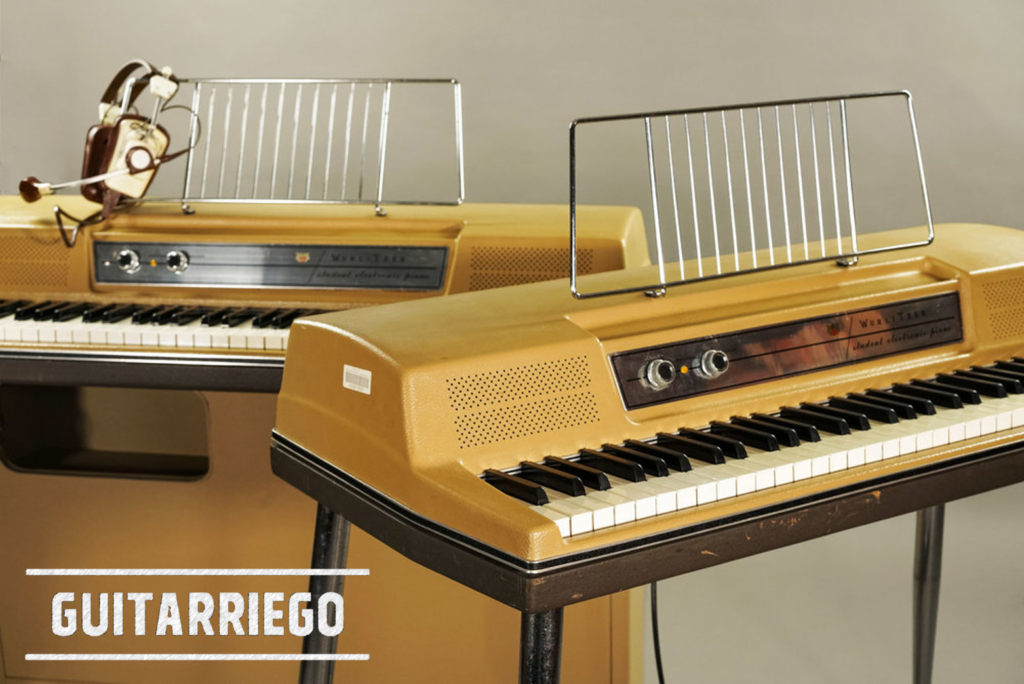
McCarty in an interview explained that he did not want that for his future. His intention was to get out of the music industry, so he started looking for work related to his engineering profession. Thus, the 1st. January 1948, he left Wurlitzer.
Gibson: Troubleshooting Kalamazzo
Ted was waiting to be confirmed for a job as assistant treasurer for the Brock Candy Company, when Friedrich Gretsch, owner of the instrument-making company of the same name, spoke with Maurice Berlin, the owner and founder of Chicago Musical Instruments (CMI), the company he owned. from Gibson to offer Ted a job. Berlin asked him if he was willing to go to Kalamazoo and spend a week or more at the factory, study the situation, and give him a report on why Gibson was losing money.

Ted agreed, so he did and spent time at the factory and talking at length with John Huis, who was then the foreman in the finishing department. Their report concluded that the company had too many chiefs and few Indians. He highlighted low staff morale due to employee lousy relationship with CEO Guy Hart, whom all employees referred to as a “HDP” according to McCarty himself.
Gibson’s owner Berlin was impressed with Ted’s report, so he offered to work running the factory with the promise: “If you can change the place and make a profit, I’ll make you president of the Company.” Ted accepted the proposal, this fact would mark the history of the electric guitar, Gibson’s Golden Age began.
Also, you might be interested in Gibson’s Failures, Rare, Ugly, and Rejected Guitar Models.
Beginning of Gibson’s Golden Age: Ted McCarty begins running the Kalamazoo factory
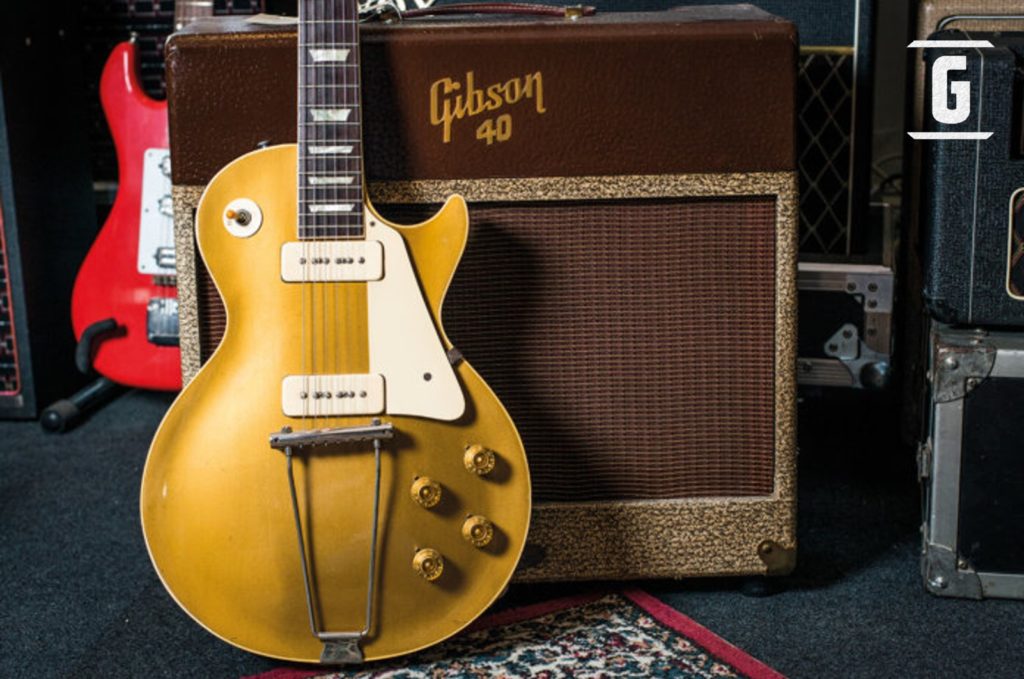
Gibson had stopped producing instruments during World War II because government restrictions on steel prevented the installation of trussrods – tensioners or webs – so the company helped with the war effort. After the war, Gibson was struggling to get back to making guitars, and when Ted joined on March 15, 1948, he immediately began to restructure the administration and improve the work environment.
By May, two months later, Gibson was already making money again. Guy Hart, the general manager, resigned in November and John Huis was promoted to superintendent. Ted was named executive vice president in June 1949, and then president a year later. Things stayed that way until he left in 1966 with Gibson operating at a profit at all times. However, in an interview McCarty explained that beyond his job title, he ran the company from the first day he arrived at Gibson.
Joining Gibson gave Ted the opportunity to return to his engineering roots. His business acumen was obvious, but when we look at the parts and models that Ted designed or promoted, his accomplishments as a guitar innovator are impressive.
Why did Gibson design the Les Paul?
In 1950, Leo Fender released the first production guitar, the Esquire. According to Ted, Leo copied the idea of the guitar that Paul Bigsby built for Merle Travis.
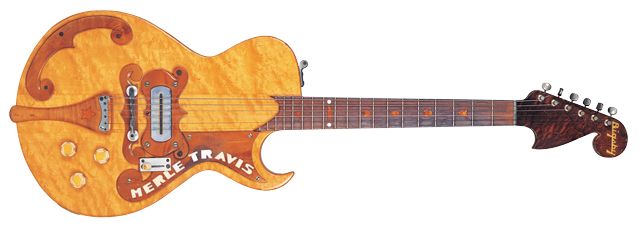
Ted and his team at Gibson realized that Fender was gaining popularity. So McCarty said, “We have to get into that business. We are giving him free rein, he is the only one who makes that type of guitar.” So they decided to make their own solid body guitar. They spent a year working on the model that would later be called “Les Paul”.
Gibson Les Paul (1952): the brand’s first solid body guitar
Development of the Gibson Les Paul
First, they had to learn about solid body guitars, they are different from snare guitars. Built differently, they sound and respond differently.
Testing materials for the guitar, both iron and wood
McCarty says they did a test with an iron rail track. They fitted a bridge, a pickup and a tailpiece. “You could hit that string, take a walk, come back, and it would still be ringing,” Ted said. Then they made maple guitars, which were too loud and sustained. Then they made a mahogany guitar that was too soft, “it didn’t have that.” So, they finally made a combination, they made it all mahogany with a maple top or top.

Guitar shape design
So they started to design the shape of the guitar. They wanted something that wasn’t too heavy. So they made a body a little smaller than the Fender with a traditional shape.
Given that they had always made guitars with a curved top -carved- and, furthermore, taking advantage of the fact that they had precise machines to make them that way, knowing that Leo Fender did not have them and could not make them, they decided that they would make them that way to differentiate themselves from the new guitars Fender.
Actually, the guitar was being designed without Les Paul even knowing about it. The work was done entirely by Ted and his team of engineers, the Gibson Think Tank.
In 1952, the first model launched was Goldtop, two years later, in 1954, the “Black Beauty”, the black Gibson Les Paul Custom, joined the line. Around 1958, the first Les Paul Sunburst Cherry was released and in 1959, they were released with showy flamed tops, for this reason, the “Bursts”, as the guitars of this era are called, from 1959 they are considered the “Holy Grail. “or Holy Grail of the Gibson Les Paul Standard.
If you want to know more, visit our guide on the evolution of the Gibson Les Paul throughout its history.
Prototype testing stage
McCarty says that after having it tested by several guitarists, and receiving good returns in terms of its performance and aesthetics, they had to find a good excuse to manufacture and sell it. Traditional guitarists were acoustic guitar players, and like other guitar makers, they seemed simple and rustic. “Anyone with a loop and a router can make a solid body guitar” was the phrase other manufacturers used to say.
The appearance of Les Paul, the perfect man

Ted knew that Les had made a solid body guitar called “The Log”. Also, Les Paul and his wife, Mary Ford, were the sensation of the moment, with a lot of exposure. Thus, it was that Ted McCarty brought the “Solid Guitar” to the guitarist, who was impressed and agreed to name it in exchange for the collection of royalties, which amounted to a dollar for each guitar sold.
Visit our guide on the best years for a Gibson Les Paul and the bad years to avoid.
Les Paul influence on design
According to a 1992 interview with Ted McCarty, the Les Paul’s only input was in the long tailpiece design. Les Paul, proposed that instead of having the strings hooked to the tailpiece – like the traditional Gibson trapeze tailpiece -, put a “wrapped around” solid steel bar.
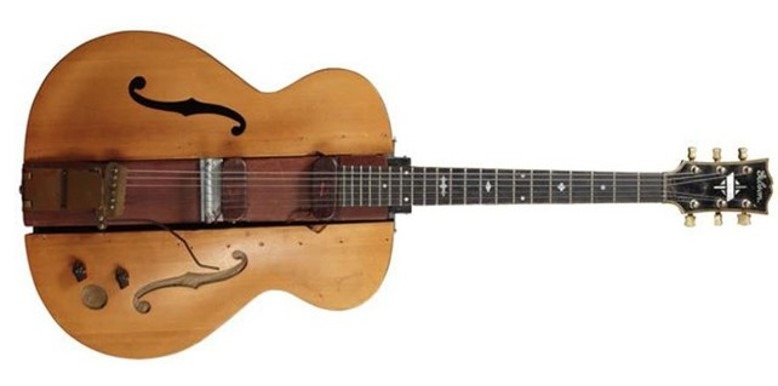
Ted McCarty, the true inventor of Gibson
But Ted’s contribution was not only to put Gibson in the world of solid body electric guitars, but also to create all the models, yes, absolutely all the classic standard production models of the company.
Thus, 1958 was an iconic year for Gibson. Launching the ES-335 models and their older brothers the ES-345 and ES-355, and the futuristic Flying V and Explorer. Later, in 1960, with the discontinuation of the Les Paul due to falling sales, it launched the best-selling model in the company’s history, the Gibson SG. Finally, in 1963, he released the Firebird, in that way, all the classic Gibson electric guitar models in history were created and released under the direction of the genius of Ted McCarty.
So too, in the McCarty Era, Gibson released the first solid body electric bass, the EB-1, and also the most successful, the EB-3 also known as the “SG” electric bass.
Additionally, during Ted McCarty’s time as president of the company, the first humbucker was also developed by a Gibson engineer, Seth Lover. Today the humbucker of that time is known for the label that was attached to it informing that the patent was in the process of being registered, the famous “PAF” -Patent Applied For-. Gibson’s flagship bridge, the Tune-O-Matic, was also designed.
The Gibson vs. Fender Rivalry Story: Les Paul: “If You Don’t Do Something Fender Will Rule The World”.
Top Gibson Models Released Under the Direction of Ted McCarty
In addition to the legendary Gibson Les Paul Standard, which we already saw in detail, we will see the main instrument models released during the McCarty Era, Gibson’s Golden Age.
Gibson EB-1 (1953): Gibson’s first electric bass

Initially called simply “electric bass”, the Gibson EB-1 which stands for “Electric Bass 1”, was the brand’s first electric bass. Its release was in 1953, in response to the success of the Fender Precision Bass. Rather than designing the body based on that of an electric guitar, it was designed to look like a double bass.
It has a solid body and has painted “f” -f-holes- on the lid. Built in a short 30.5 “scale.
It will surely make you remember the Höfner 500/1 known as the “Violin Bass” that Paul McCartney used. It is important to note that the Höfner was launched two years later than this, in 1955, so it is likely that its design was influenced by the EB1.
Production of the EB-1 ended in 1958, when Gibson replaced it with the EB-2, released that same year, and the later EB-0, released in 1959.

The EB2 follows the design line of the ES-335, both were released in the same year, 1958, and the EB0 features the same aesthetics as the Les Paul Junior double-cut. Starting in 1961, with the release of the SG and the EB-3 bass, which had the same body shape as the guitar, the EB-0 also takes the body shape of the SG. The difference between the two basses is that the EB-3 includes an additional bridge pickup and a more versatile electronic circuit.

ES-335 (1958): the first semi hollow

In 1958, the Gibson “Dot” ES-335 was released as an intermediate choice between the solid body of the Les Paul and hollow bodies like the ES-175. The objective was to obtain a sweeter, smoother and rounder sound, with the nuances of a hollow body guitar while eliminating – or at least reducing – the problem of feedback or coupling and sustain.
This new guitar was more versatile and encompassing, adapting to jazz, blues and rock musicians alike. Keep in mind that even then, there were many traditional guitarists who still resisted using solid body guitars.
Although the ES-335 is somewhat traditional in appearance, its design concept was very novel for the idea of putting the solid maple bar in the middle.
During that time, the more luxurious versions, the ES-345 and ES-355, were also released.
Also, we recommend that you visit the list of the best guitarists who played with Gibson guitars: Les Paul, SG, ES-335, Firebird and other models.
Gibson Flying V and Explorer (1958): the futuristic line

Business was good in 1956, but Fender had released the Stratocaster in 1954, an innovative model, and Ted, a marketer, knew that Gibson guitars were seen as old-fashioned, too “traditional” by the market. To renew the vision of the brand, he made a bold move.
In July 1957, Gibson introduced a revolutionary line of guitar models, designed by McCarty himself, called the Modernistic Series at NAMM. It included three models, the Flying V, the Explorer and the Moderne. Which were made of korina, a wood also known as limba. The korina is from West Africa, similar in appearance and properties to mahogany, although lighter and yellow, and that the Company had already used for its Hawaiian lap-steel.
Finally, based on public response, the Flying V and Explorer were launched in 1958, leaving the Moderne a mere project. They were not commercially successful then, they were models too far ahead of their time, their design was daring and audacious, and a few years later they were discontinued. Later, by the hand of heavy metal guitarists, who adopted them, both models were relaunched.
Gibson SG (1961): the “evolution” of the Les Paul

By 1960, sales of the Les Paul had dropped. Probably due to the not-so-light mahogany, the new units were heavy and seen as “too traditional” guitars not to say dated. So, in the late 1960s, Gibson made another strong play.
Released “the new Les Paul” with a more modern concept. A thinner and lighter double horn body and extraordinary high fret access. This model was advertised as the evolution of the Les Paul, which was no longer appreciated by the market.
However, the Les Paul did not like the model, which is why he asked that his name be removed from that model. Simultaneously, the musician was divorcing his wife, who was also his artistic partner, and this had impacted on the guitarist’s popularity. When the royalty contract expired in 1962, by mutual agreement of the parties, it was not renewed. Thus, the “new Les Paul” was simply called SG, which is the initials for “Solid Guitar” -solid guitar-.
The Gibson SG Standard has been built uninterruptedly since the late 1960s, although the flagship number used is 1961 for reissues, to this day. Also, it is the brand’s best-selling guitar model.
Also, check out this guide on the best years of Gibson SGs and the worst years to avoid.
Gibson EB-3 (1961): The brand’s most successful bass

Without a doubt, the Gibson EB-3 is the brand’s most famous and legendary bass, passing through the hands of superstars of the time like Jack Bruce, from Cream, no less. The novelty with respect to the EB-0 that also took the same form, is that the EB-3 was added a mini-humbucker pickup in the bridge position, expanding the circuitry with two tone and volume pots, and a four switch. positions. Its success was resounding, EB-3 doubled the sales of its more successful predecessors.
Gibson Firebird (1963): the first neckthru

The Gibson Firebird is probably the brand’s most unique model. The guitar is neck-through-body, that is, the same piece occupies the entire length of the instrument in its central part, going from the headstock to the end of the body. In addition, the neck is laminated with nine layers of mahogany and walnut. Another peculiarity that differentiates it from the rest is that it comes with mini humbucker pickups, which were common in Epiphone guitars, but not so in Gibson. Finally, the Firebird features an inverted headstock.
Under the direction of Ray Dietrich, a car designer, the design was borrowed from the Gibson Explorer and had the edges “rounded”. The goal was to compete with the Fender Jazzmaster and Jaguar models, whose releases were from 1959 and 1962 respectively.
According to Leo Fender, the guitar’s design had been copied from the Jazzmaster model. Below you can see the bodies of the guitars, and see the design similarities.

Other Gibson Models Released in the McCarty Era
Above we describe the main guitar and bass models released during Gibson’s Golden Age, the McCarty Era. But there were others, no less emblematic, such as the economic or studio versions like the Gibson Les Paul Junior, Gibson Les Paul Special, Gibson Melody Maker and the Gibson SG Junior. There is also the iconic Gibson EDS-1275, this double-neck guitar was released in 1962. At the bottom is the Thunderbird, with a body shaped like a Firebird.
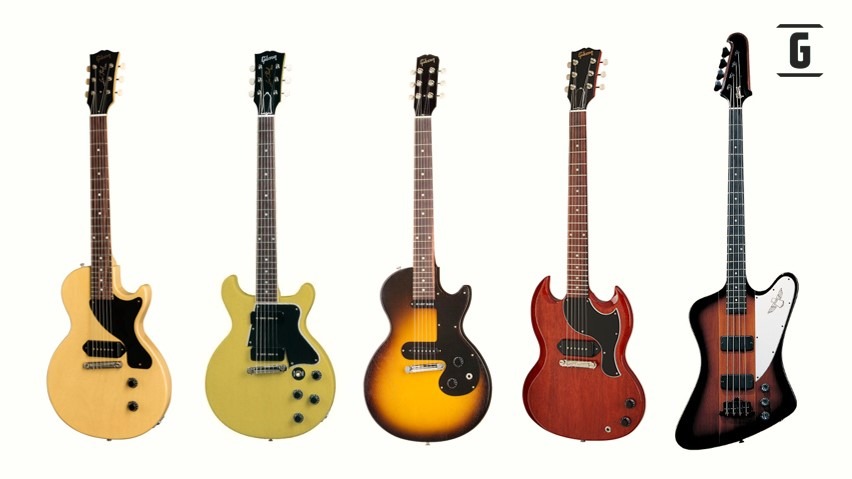
Gibson buys Epiphone (1957)
At that time, the company’s second brand today was a direct competitor with similar quality standards. In fact, guitarist Les Paul, prior to the Gibson deal, was an endorser of Epiphone, using their guitars and had even built “The Log” at their plant.
Orphie Stathopoulo, owner of Epiphone, wanted to sell the company. Ted let him know that Gibson would be interested. In 1957, Gibson bought the Epiphone name and its assets, machines, and stock. The Epiphone factory in New York and Philadelphia was closed. Gibson took all assets from these facilities and brought them to Kalamazoo.
If you want to know more, visit our post on the history of Epiphone guitars: secrets, myths and truths.
Gibson begins manufacturing Epiphone instruments (1960)
Initially, it was not in Gibson’s plans to continue to build instruments under the Epiphone brand. It was only after everything was installed in rented premises in Kalamazoo that Ted discovered that they also had all of Epi’s guitar templates. By calling a meeting with Maurice Berlin, it was decided that Gibson could now start producing Epiphone guitars and basses.
One reason for doing this was that Gibson operated a franchise program whereby each of the distributors was assigned an exclusive zone. In this way, there were good distributors who could not be sold to when there was already an official distributor in your area. But with the new Epiphone products, you could now sell Epi instruments to those dealers instead. Thus it was, that the Company also began to commercialize the products of its former competitor.

Around 1960, all Epiphone models were manufactured in Gibson’s facilities and such was the quality that they were in direct competition. It was only after Norlin’s takeover of the company and the departure of Ted McCarty that the Epiphone brand was used for cheaper guitars produced abroad.
End of Gibson’s Golden Age (1965/1966)
Why did Ted McCarty leave Gibson?
Ted explained in an interview that he felt like he wanted to go, since he could see that he was going to have problems with “a certain part”, and he didn’t want to go through all of that. According to Fred W. Gretsch, McCarty was unhappy with changes in management at CMI, the owner of Gibson.
Ted McCarty buys Bigsby Accesories (1965)
Paul Bigsby and Ted McCarty had a good relationship, they were probably friends. Gibson was a major Bigsby customer and was the first manufacturer to put Bigsbys on factory-made guitars. Also, Ted loved his tremolo, although he had a complaint: the fixed lever was always in the way of a guitarist’s hand.
Thus, McCarty designed a new version with an arm that can be balanced and thus stay out of the way of the hand when not in use. At the time, Gibson was a massive Bigsby buyer, and the design belonged to McCarty, so other companies like Gretsch were prohibited from buying the Bigsby swingarm model.
McCarty struck a deal with Bigsby to allow other manufacturers to use the rocker lever on their guitars if Gibson could buy the tremolos at a discount. The two formed a close bond, which would later allow the sale of the company to Ted.
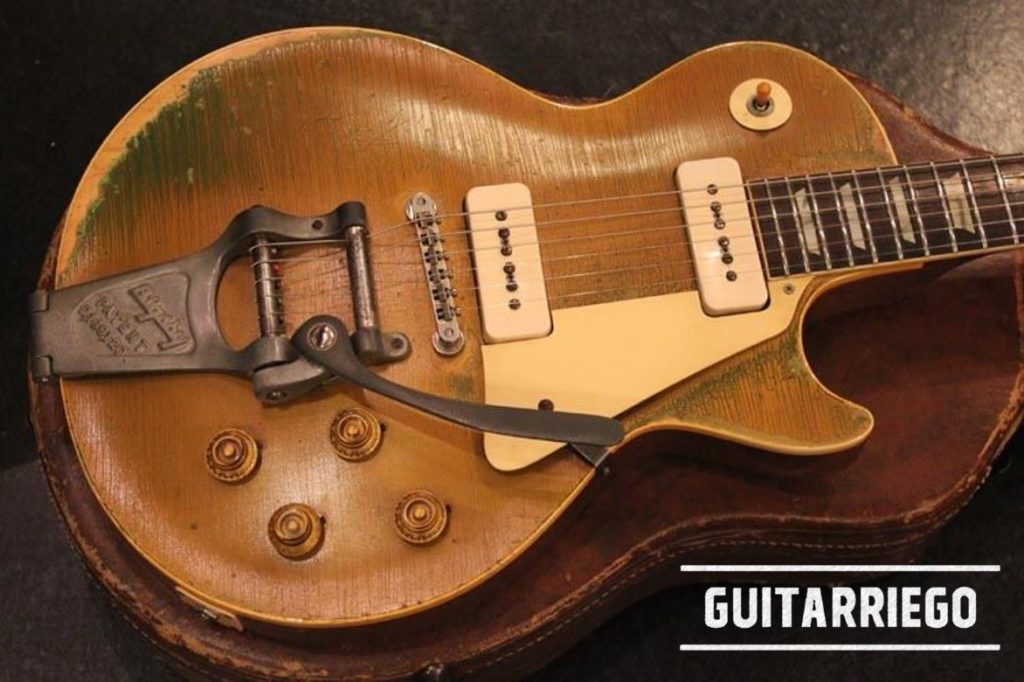
It was 1965, Ted was 56 years old, when he spoke with Paul who offered him his company to be able to retire, since he was already 65 years old and had some health problems. Paul wanted McCarty to buy it for him, because he wanted someone who esteemed the company as much as he did, which would not happen if he sold it to a Corporation like Gibson. Ted agreed to buy their business and stayed at Gibson until they could find a replacement for him. Thus, Gibson’s Golden Age was coming to an end.
You might be interested in reading our review on Fender vs Gibson review: characteristics and differences of these guitars.
Heritage of the McCarty Era at Gibson
During Ted’s 18 years with the company, it grew exponentially. He successfully introduced Gibson into the solid body electric guitar and bass business with more than 20 launches of different models of electric guitars and basses, thus demonstrating his infinite capacity for design, creation and invention. But McCarty was not only a great creator, clearly, he was also a businessman with great business acumen.
If you look at the current models in the line, you’ll see that virtually all of them were released during the McCarty Era.
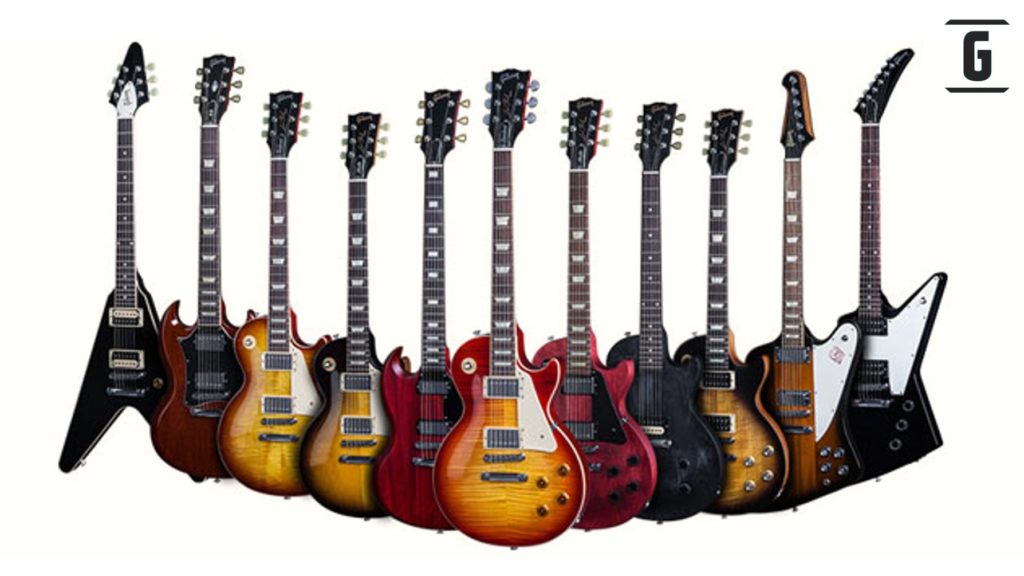
The Bigsby Accesories Stage
The Bigsby purchase was jointly with John Huis, who at the time of the purchase was Gibson’s vice president. With the purchase of the company, Bigsby’s production moved from California to Kalamazoo. After a difficult and losing start in the late 1960s, Gibson’s two ex-men managed to succeed.
Ted ended up spending more than twice as much time with Bigsby as he did with Gibson. He and John Huis also branched out, buying a company called Flex-Lite that made specialty lighting, and at times, they had to use Flex-Lite’s profits to keep Bigsby afloat.
In 1999, aged 89, Ted retired and sold the company to Fred W. Gretsch, son of the founder and current owner of Gretsch Guitars.
Advice and consulting to Paul Reed Smith – PRS
A reflection of the lack of recognition of Ted McCarty is that Paul Reed Smith knew about him because most of the guitar patents had the name of Leo Fender or Ted McCarty.
At the time, PRS was a small factory that was just beginning to scale production. Before that, Paul had worked for years as a luthier making custom guitars, like the one he made for Carlos Santana in 1980.

Paul wanted to know how they worked at Gibson in the 50’s. How they glued the caps, how the pickups wound, what kind of glue they used for the frets and how they glued them, how they leveled the fingerboards, how he dried them, how he glued the necks, he wanted to know all about Gibson.
So, in 1986, Ted got a call from Paul who offered him a consulting job. Since McCarty was blind, he couldn’t travel, so Paul flew out to meet him and spent a week with Ted at his residence in Maui, Hawaii, and from there the two established a lasting friendship.
Ted McCarty, the ignored creator
It’s ironic that after being Gibson’s most important man, and responsible for Gibson’s Golden Age, developing all of the Company’s most iconic electric guitars, the only guitar named after him is a Paul Reed Smith.
Smith says that “the third time – that we met – he was very upset, and I said to him – ‘what’s up Ted?’ -‘Nobody asked me these questions in 20 years, you want to know how to glue the frets’- he said, -you want to know how we made the bodies, you want to know how we did all these things’ he completed.
Paul has expressed: “I think he – Ted – was upset that a certain company underestimated what they had done.”
The PRS McCarty, according to Paul, is the guitar designed by Ted -the Les Paul-, with the addition of the double-cut.
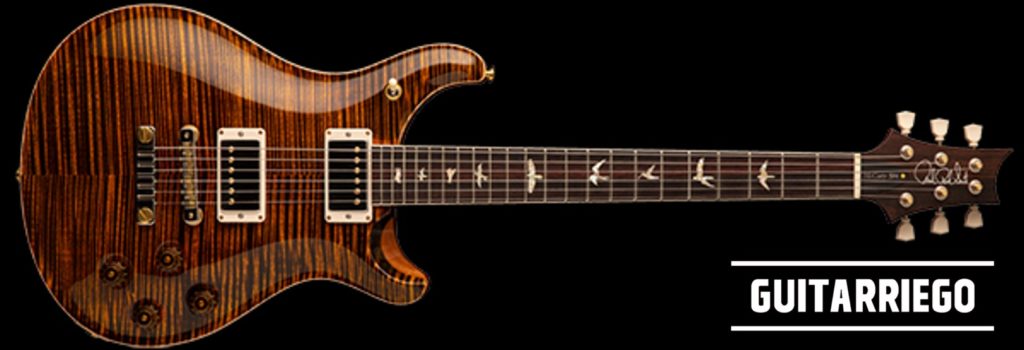
Death and Legacy of Ted McCarty (2001)
Ted did not play the guitar, but his engineering status and business skills allowed him to create a new world, the Gibson world. He gave guitarists instruments whose main value was quality and innovation above all else.
Ted died in April 2001, at the age of 91. His legacy, temporarily forgotten and dusted off by the great Paul Reed Smith, will always be remembered.
Ted McCarty was to Gibson what Leo Fender was to Fender.
Also, check out our Gibson Les Paul vs Epiphone Les Paul: Specs, Features, and Differences comparison.
You can share opinions or also chat about this and more with other musicians in our comments section.






